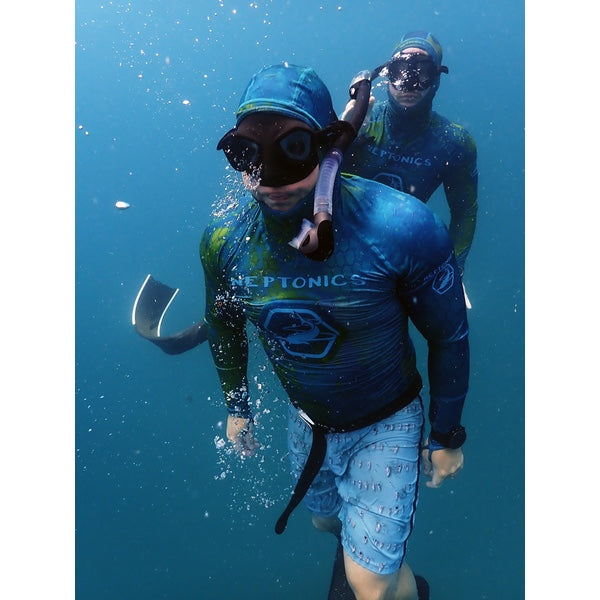
Freediving Safety - The Buddy System and Spearfishing
Freediving Safety - The Buddy System and Spearfishing
In all underwater sport it is a safe practice to participate in the buddy system. Two or three divers helping one another is significantly safer than an individual diving on their own. Safety should be your utmost priority when diving, and you should absolutely never dive alone. If done correctly, the buddy system can even help your group land more fish.
How the Buddy System Saves Lives
The most important reason to use the Buddy System is the fact that is can and does save lives. The greatest risk that freedivers and spearos face while diving is shallow water blackout. If you are unfamiliar with this term, you should take a freediving course or talk to an instructor to educate yourself on the risks of freediving. Almost all shallow water blackout incidents occur at the surface or within 15 feet of the surface. That means an attentive dive buddy can prevent almost all potential shallow water blackout fatalities if they know how to act in this emergency. Again, if you haven’t already, you should take a freediving course to learn the skills necessary to save yourself or your dive buddy.
Implementing and Improving Your Buddy System
Any group of friends is going to have different strategies in their given dive location. There can be mixed skill levels, or separate goals in any given group. Communicating expectations before you get in the water is a valuable practice. Rehearsing blackouts and emergency scenarios with your team can be the difference between knowing what to do and saving a life or fumbling around and losing one.
Two Up, One Down Method
Some groups of three prefer to use the Two Up, One Down method, which allows someone to always be underwater. As the name implies, you have one diver conducting a dive. The second person is acting as the dive safety and doing their breath-up. The third diver is conducting their recovery after their last dive. This is a good system to implement in a group of newer divers, or if the group is diving in deeper water where you may need longer recovery times.
One Up, One Down Method
The One Up, One Down Method is also popular. It allows for a smaller amount of diver pressure in the chosen dive site. This does require both divers to act as more attentive dive buddies and to multi-task a little more. To do this method properly, the safety needs to stay at the surface with the recovering diver for a minimum of 30 seconds to ensure the diver does not blackout. This is a better practice for shallower water, where you have shorter recovery times. A proper timing device makes this method even safer. It is helpful to have some type of dive computer to make sure you and your dive buddy are doing proper recoveries.
How the Buddy System Helps Land More Fish
Rocked-Up Fish
It is very common for a diver to take a long shot on a fish at the end of their dive. It is not always the best practice, but sometimes it's the shot you get. These shots often turn into a fish that goes into a rock, or ledge, or inside whatever structure is nearby. If you are diving by yourself (again, don’t do that) you have to come to the surface and do a long breathe-up before you can safely dive back down. In that time the fish can work its way off the spear shaft or get taxed by another creature. If your dive buddy is right there on the surface they can help pull your fish out of the rock for you. You owe them a drink and a thank you afterwards because they had just used one of their dives to help you, but that’s what good buddies do.
